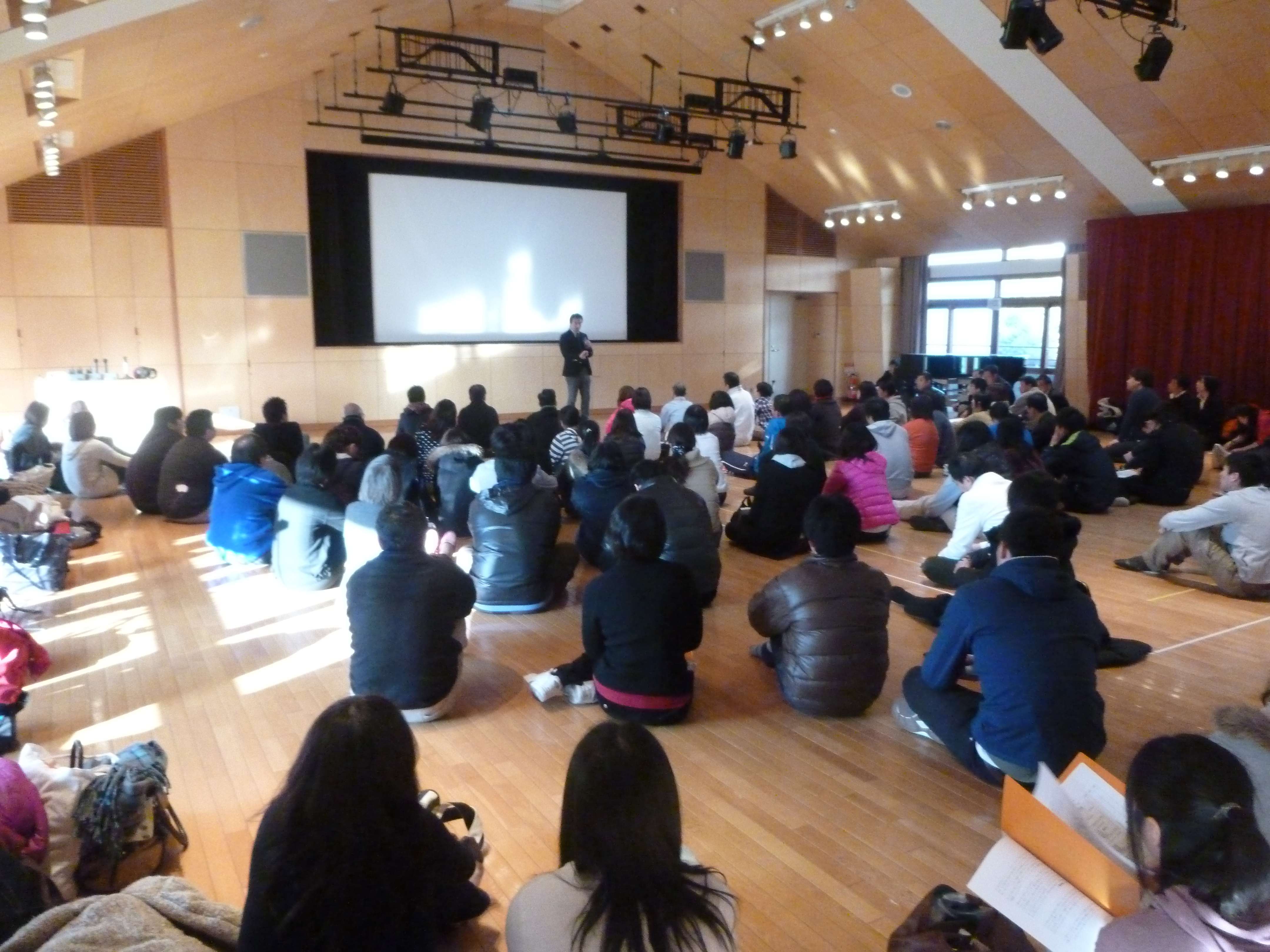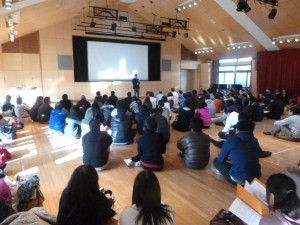
Jan 14, 2013 Can a Lecture Be Experiential?
This article was originally posted in the fall of 2010. Over the past couple of years I have continued to explore this subject. Here is the updated post:
While in graduate school, I had an interesting conversation with Dr. Jasper Hunt, my professor at Minnesota State University, Mankato. We were filling out conference proposal forms for an experiential education conference. He commented about the “check box” on the application form requesting us to identify which portion of the presentation would be experiential and which portion would be lecture based. Jasper shared that he felt this was counter productive to defining a quality presentation. He argued that a good lecture CAN be experiential.

I reflect back on that comment when attending (or delivering) a lecture or lesson. Recently this topic came up in my work with both classroom teachers and corporate trainers who struggle with the need to cover a great deal of curricular content in a short time in a structured classroom or boardroom setting. These educators struggle to balance their need to cover the content and their desire to teach more experientially in order to engage learners and create lasting meaningful lessons.
Last summer I attended two different keynote lectures at educational conferences that were very engaging and created lasting impressions on me. I reflected on that conversation with Jasper and wondered: What was it that made those lectures engaging? Would they be considered experiential? Since that time when I attend an especially engaging keynote or lecture presentation I take notes on the presenter’s techniques.
When I compare these effective presenters’ actions with the principles of experiential education I find they incorporate many tenets of experiential education and brain-based teaching strategies. Surprisingly, they do so in what might not usually be considered an experiential format for teaching: a giant lecture hall with a power point presentation.
Here is what I notice:
Emotional Engagement
When the speaker is knowledgeable and passionate about their subject it comes through regardless of the format of their lesson. This kind of energy is contagious- and can’t help but spark a sense of relevancy and buy in from audience members. When Dr. Hunt lectured on the subject of experiential education philosophy or ethics, his interest and passion around the subject were obvious and infectious. I remember being drawn in by his enthusiasm and class time flying by.
Recently, I worked with a group of high school teachers who are trying to teach more experientially in an atmosphere with a strong emphasis on test scores. I challenged them to reflect on what it was that first ignited their passion around the subject area. If they are in touch with that passion and find a way to communicate that, I believe they will naturally find a way to stimulate some of that same passion in their students.
In lectures that are emotionally engaging I notice that the speaker really seems to connect with the audience in a meaningful way. They encourage and acknowledging comments from individuals in the audience, or walk around the room rather than just standing at the podium.
Metaphor, Relevancy, Reflection, and Differentiated Methods of Instruction
These lecturers also find ways to inspire emotional engagement on the part of the audience from the very start of their presentation through the use of humor, personal stories from their life, quotes, a provocative video or cartoon, or story with meaning and relevance to the learners in the room. They often ask the group to predict or guess about upcoming information, analyze a piece of music or video clip. Many walk around the room and made eye contact with specific audience members.The speakers use humor that is relevant to the audience. They use visual aids (photos, cartoons,) to illustrate a concept and relate it to the audience’s experience.
Transitions, Hooks, New Beginnings
These lecturers are intentional in the way they start and end the presentation. Beginning with a reflective question, interesting story, or compelling statement to engage the group, and then sharing a quote or giving the group a personal challenge to the group to end the lecture. In these cases, they take advantage of the principle of the “primacy-recency effect”—the idea that people remember most the very beginning of a learning experience and the very end (Sousa,2006).
They create a hooks with questions, a quote, a provocative statement, and a piece of music or visual image. They ask audience members to guess, predict something, or reflect on provocative information. They offer a question and answer session and a reflective piece.
Relevancy and Transference to Real Life
The speakers infuse stories that the audience relates to, both about themselves and others. They also ask audience members to reflect on a related personal experience of their own. They often speak of problem that needs to be solved or ask questions of the audience.
Social Engagement
These speakers often ask audience members to reflect on or share an experience related to the subject with someone sitting nearby or at their table. When they pose questions during their presentation they ask audience members to talk with a partner or with people at their table about it. When they used a power point there are VERY FEW WORDS. The power point serves as a place marker, prompt, or visual aid to underscore a point.
This reflection on what has drawn me into recent lecture presentations brought me to the conclusion that lectures can be experiential. With careful planning, intention, consideration of the needs of their audience, along with the ability to tap into their passion around a subject, an educator can engage learners experientially through a lecture. Please weigh in with your thoughts about whether a lecture can be experiential and techniques you have seen work to engage learners in lecture and direct instruction situations.
Reference:
Sousa, David. (2006). How the Brain Learns. Thousand Oaks, CA: Corwin Press.



Jen Lara
Posted at 06:02h, 17 JanuaryJennifer – I recently gave my first keynote and I am happy to report that I believe I covered all the experiential points listed above! Yay! I was so distraught about giving a 60 minute keynote and wanting it to be engaging and transformative. I used hand signals paired with my five main points. I used three short videos that each had a metaphorical connection. I had three “brain breaks” that required participants to socially reflect. I closed the keynote with a reflection, as well. Whew.
If you see or experience other creative lecture techniques, please share.
Jen L.
Avery
Posted at 08:10h, 17 JanuaryAs I read this, about mid-way down it occured to me that some of these tennents are exactly what my pastor does as a natural part of her sermon every Sunday! I forwarded the blog along to her. Thanks Jen!
Tips for designing experiential learning and studio teaching | Strategies for Successful Teaching
Posted at 03:10h, 04 December[…] The Inspired Educator Blog: http://www.experientialtools.com/2013/01/14/can-a-lecture-be-experiential-2/ […]